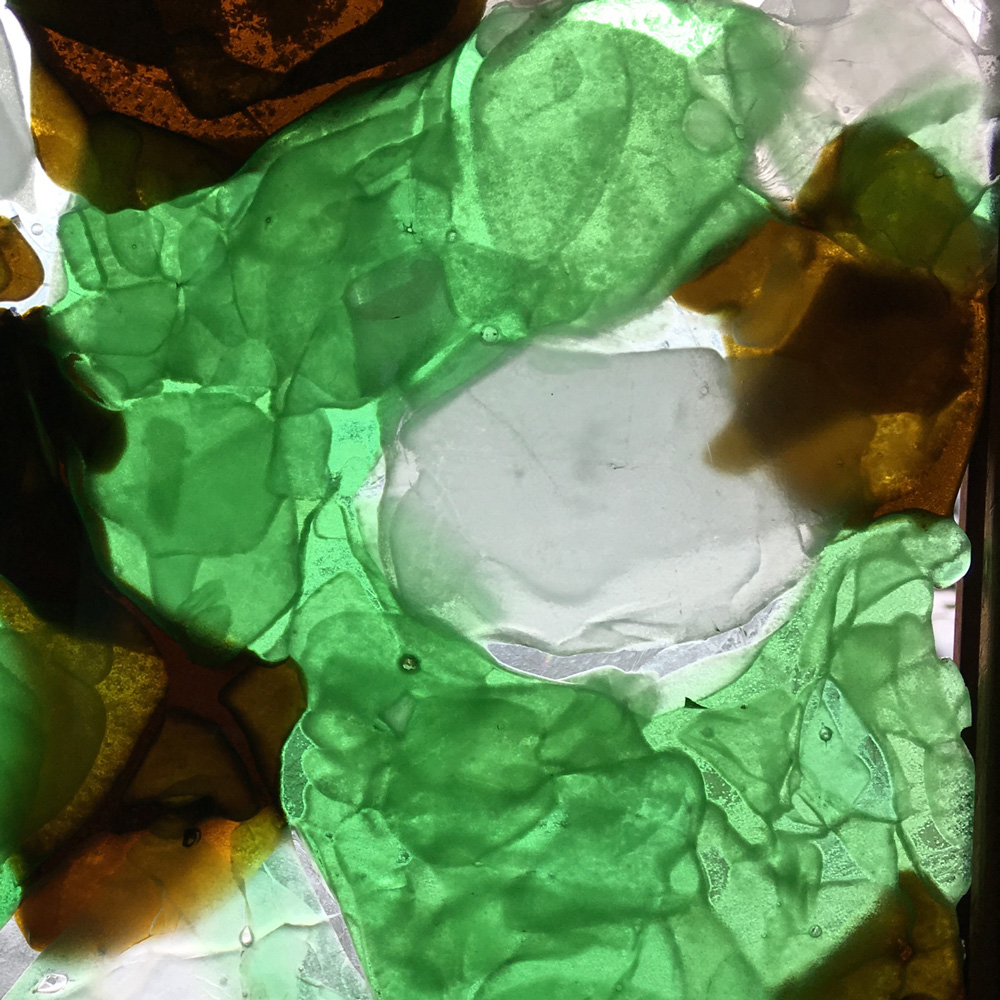2015 –
プロジェクト「漂泊之碑」は、2014年より沖縄で始まった。浜辺をテーマにフィールドワークと思考と制作を続ける複数の作品(シリーズ「津波石」やプロジェクト「沖縄硝子」、「渚三彩」など)とその活動を合わせて、このタイトルを付けている。
漂泊之碑= 津波石+沖縄硝子+渚三彩
「津波石」は、かつての津波によって八重山諸島の浜辺や 陸地に残された岩をモノクロ動画で記録する映像シリーズ。「沖縄硝子」は、沖縄の島々の浜辺に様々な国から 漂着するガラス瓶を拾い集め、砕いて溶かしたものを琉球ガラス職人と形にし、再生ガラスの食器を制作するプロジェクト。「渚三彩」は、福岡の浜辺で拾った
ガラス瓶を砕き、板ガラスや窓をフュージング(電気炉で溶かして成形する方法)で制作している。
My project Floating Monuments began in Okinawa in 2014. I have given this title to several works that I continue to produce through fieldwork and ruminations on the theme of the beach. These works include Tsunami Boulder, Okinawan Glass, and Nagi-Sancai (Three-color glaze on the beach).
[Floating Monuments] = [Tsunami Boulder] + [Okinawan Glass] + [Nagi-Sancai]
Tsunami Boulder is a black-and-white video series that records massive boulders that tsunamis have washed onto the beaches and further inland on the Yaeyama Islands. Okinawan Glass is a project to create reclaimed glass tableware by collecting glass bottles that have drifted onto the shores of Okinawa from various countries. These glass bottles are then crushed, melted, and shaped by craftsmen of Ryukyu glass. Nagi-Sancai is made by crushing glass bottles found on the beaches of Fukuoka and then fusing them into windows and sheets of glass (a method of joining pieces of glass together by melting them in an electric kiln).
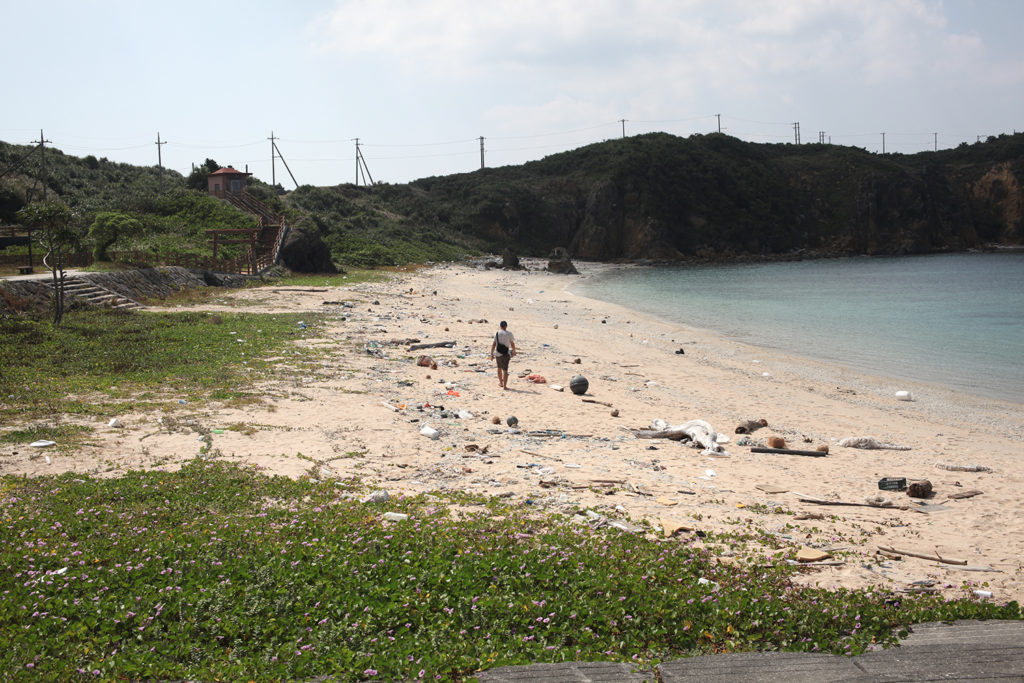
1. 浜辺を歩き、資源を拾う。
2. 偶然できる色を想像する。
3. 混ざり合う「不安定さ/制御不能さ」を受け入れる
(完成した食器を実際に人々と使う楽しさもある)。
1. Walking on the beaches and finding materials.
2. Imagining colors made by pure chance.
3. Embracing the mixture of “instability/ uncontrollability.”
(Also you can enjoy dining together with other people using these glasswares.)
::::::::::::::::::::::::::::::::::
[ 沖縄硝子 /Okinawan Glass ]
glass+mixed media
2014−
「琉球ガラス」は、第二次大戦直後沖縄の米軍基地から大量に捨てられたコーラやビールの空き瓶を溶かして再利用することで始まり、今では観光土産として継承されている。今の沖縄の海岸には東アジアからの漂着ごみが大量に流れ着くことに着目し、その漂着瓶を材料に琉球ガラス作家さんと新たなガラス食器シリーズ「沖縄ガラス」を製作することにした。様々な国や地域のガラス瓶を混ぜて出来上がった食器は時々突然ヒビが入ることがある。
“Ryukyu Glass” began by melting down and reusing empty cola and beer bottles discarded in large quantities from the U.S. military bases in Okinawa immediately after World War II, and has now been passed down as a tourist souvenir. Noting the large amount of trash from East Asia that now washes up on Okinawa’s beaches, we decided to produce a new series of glass tableware, “Okinawa Glass,” with Ryukyu glass artists using these washed-up bottles as materials. The tableware, made by mixing glass bottles from various countries and regions, sometimes suddenly cracks.
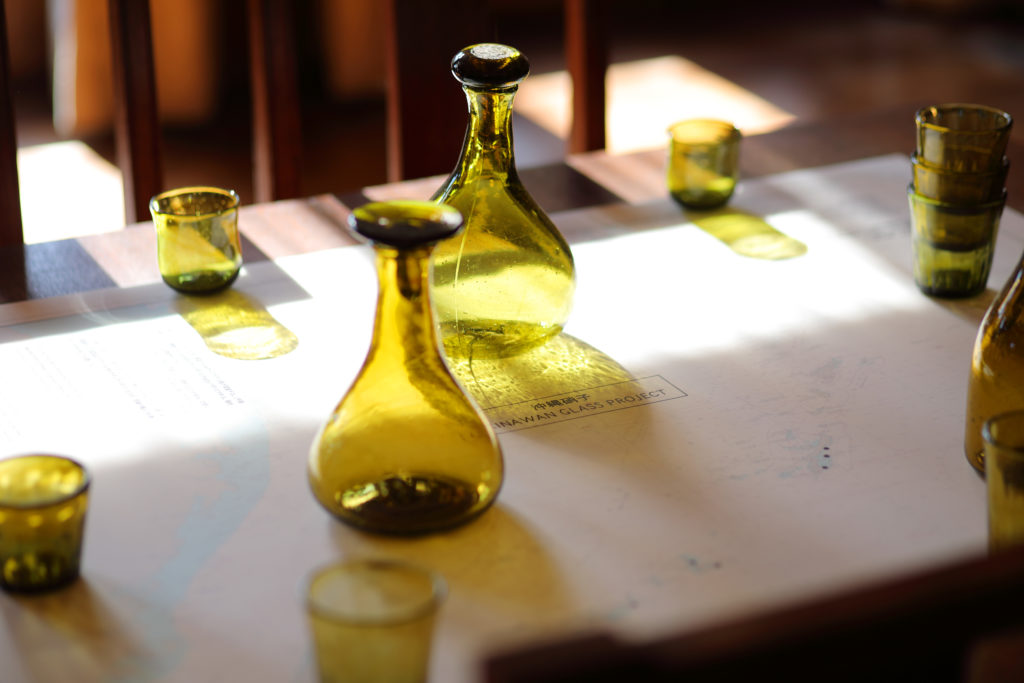
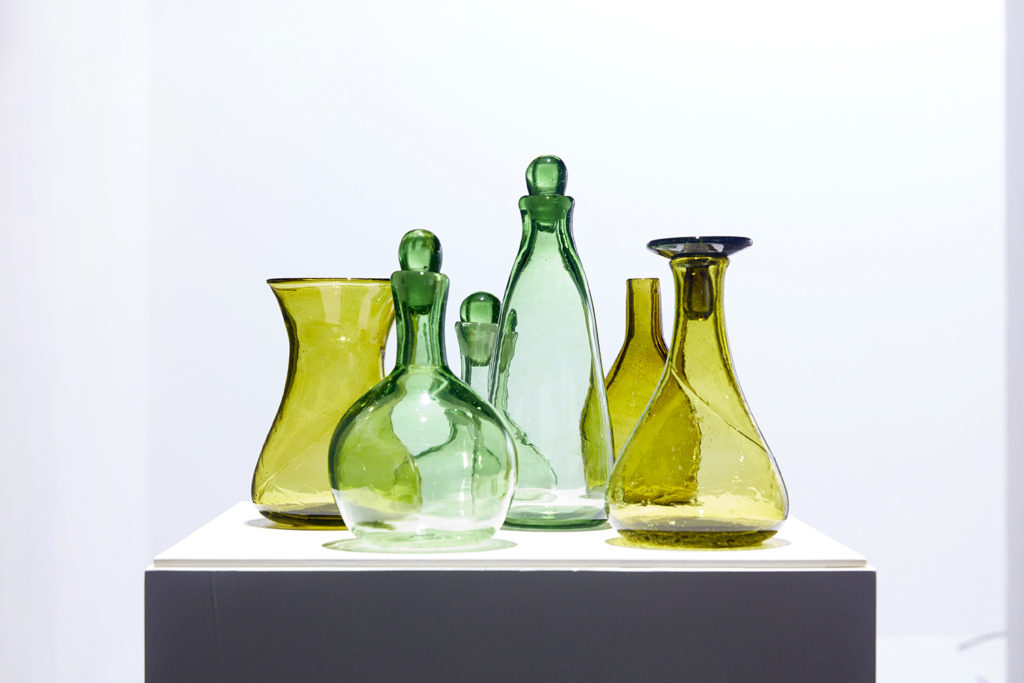
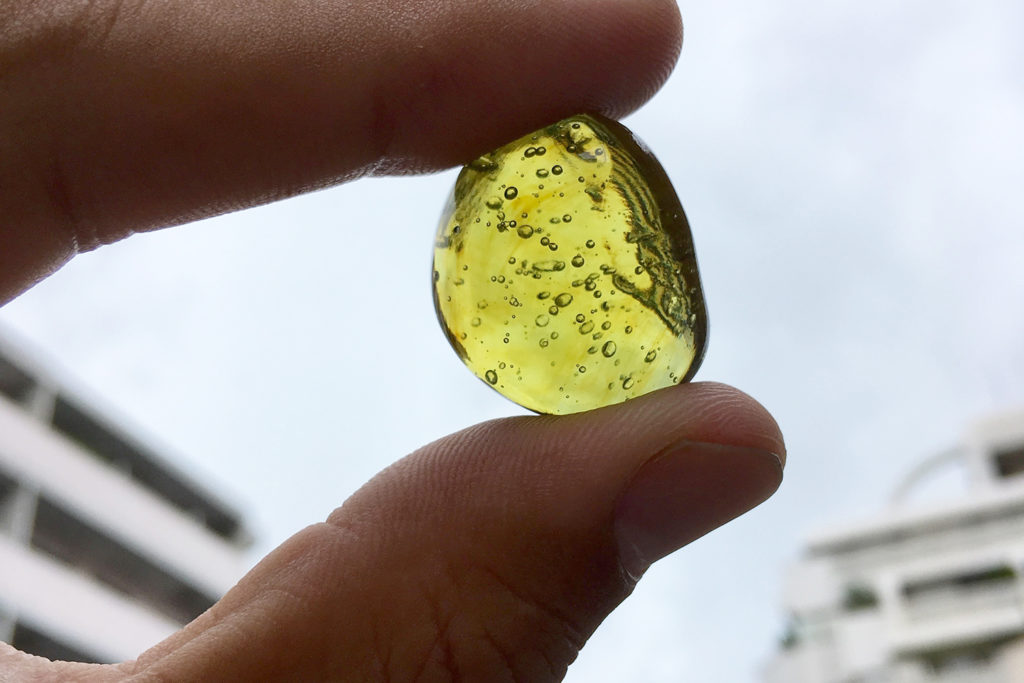
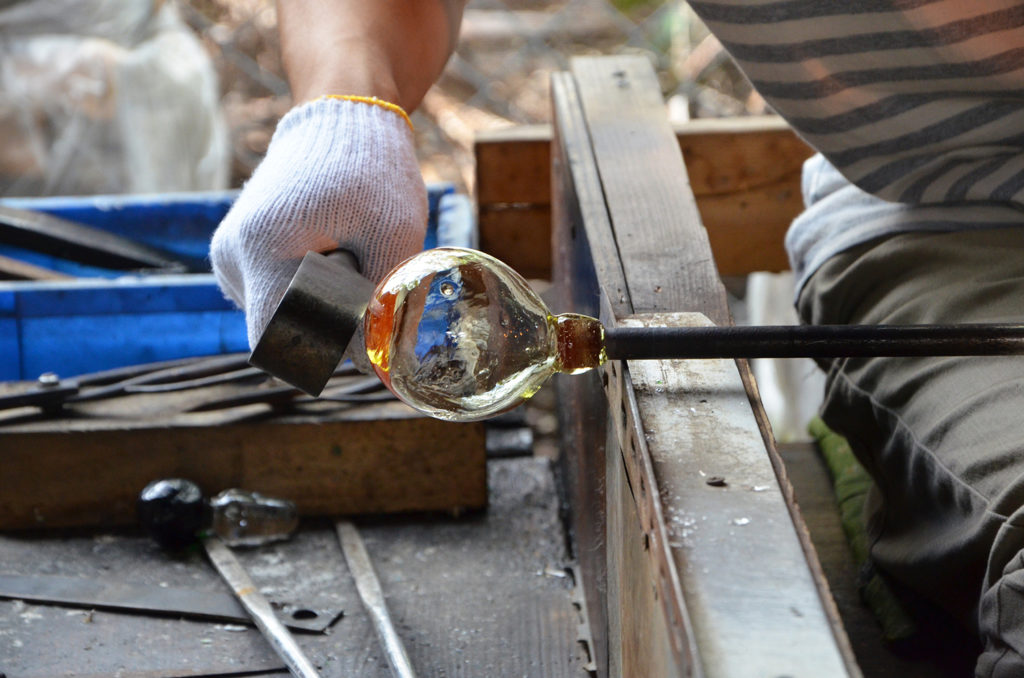
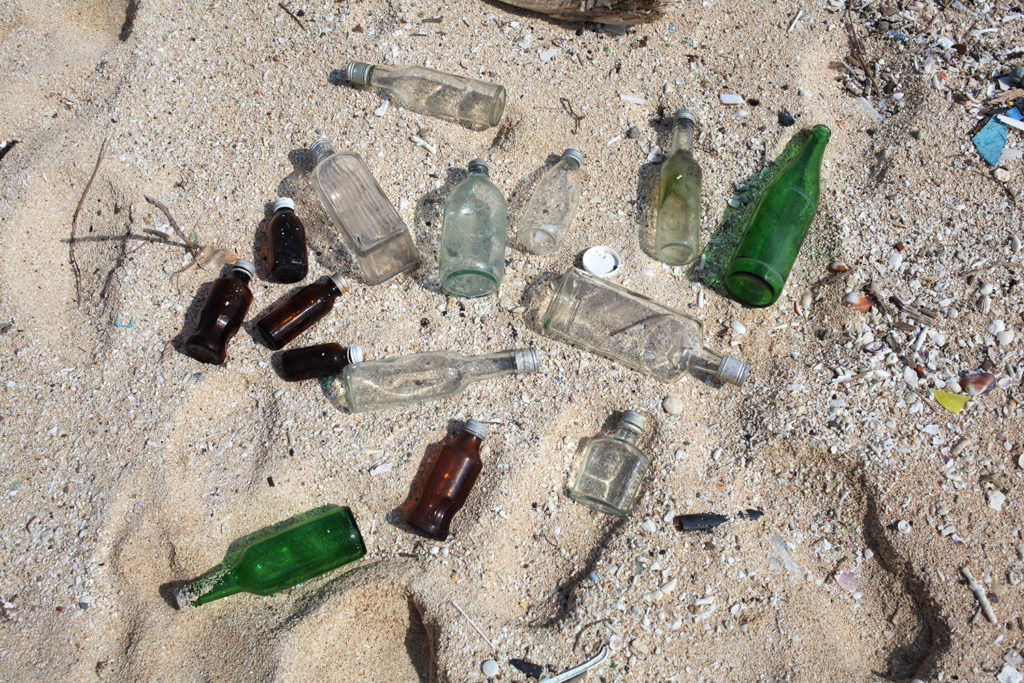
[作り方]
1. 浜辺に流れ着くガラス瓶を拾う。
2. 洗浄し砕いて炉の中に入れる。
3. 琉球ガラスの職人と形を形成する。
[メモ]
1. 沖縄の浜辺には、中国や台湾、韓国や日本からのガラス瓶が漂着する(中国からが最も多い)。酒瓶の多くは今だにペットボトルではなくガラスである。観光地化されているビーチは漂着物が少ない。
2. 様々な国のガラスを混ぜると異なる性質によって割れる ことがある。完璧に混ざりあえば割れる可能性はほぼない。ガラスの色は透明と緑と茶がほとんどで(透明は中国の白酒、緑は韓国の焼酎、茶色は台湾の保力逹が多い)、拾った瓶を選ばずに混ぜると、泡が入りグリーン系の茶色になる。
3. 沖縄には琉球ガラスの歴史があり、ガラスの職人さんが沢山いる。大量生産の酒瓶など工業製品のガラスは冷めやすく作られているため、熟練の職人でも安定した形を作るのは難しい。
[Instructions]
1. Pick up the glass bottles that have drifted on the beaches.
2. Rinse before breaking them and put them into the melting pot.
3. Give a new form to it with the Ryukyu glass craftsman.
[Notes]
1. You may find glass bottles drifted from China, Taiwan, Korea and Japan on beaches around Okinawa. (Large part of them comes from China.) They are often bottles of alcohol drinks, which are still made by glass instead of plastic. You won’t find many drifted objects on touristic beaches.
2. If you melt together glass from different countries to make a new object, it will break more easily because of the different properties. However if you can melt the glass completely, it would most probably remain intact. The color of the glass bottles is often transparent, green, or brown so that if you melt them randomly, the result would be a greenish brown colored glass with bubbles. (Mainly the transparent ones come from Chinese Baijiu. Green ones are Korean Soju. Brown ones are
Taiwanese Paolyta.)
3. You may find a lot of glass craftsmen in Okinawa since there has been a tradition of Ryukyu glassware. However the manufactured glass bottles are usually made with materials that cool down and get fixed within a very short time, so it is even difficult for the skilled craftsmen to create a stable glassware.
日記「皿と月」
essay “Dish and the moon”
http://old.m-shitamichi.com/daily-archive/post-98.php
日記「ガラスの旅」
essay “Glass journey”
http://old.m-shitamichi.com/daily-archive/post-100.php
::::::::::::::::::::::::::::::::::
[ 渚三彩/Nagi-Sancai (Three-color glaze on the beach) ]
glasses+mixed media
2019−
福岡の浜辺を歩き、中国や韓国などから流れ着く ガラス瓶を拾い集めた。この地域で発掘された陶器「三彩」を参考に窓ガラスを制作した。
I walked along the beach in Fukuoka and picked up glass bottles washed ashore from China, Korea, and other places. I made glass window panes, referencing the Sancai (three-colored glaze) pottery excavated in this area.
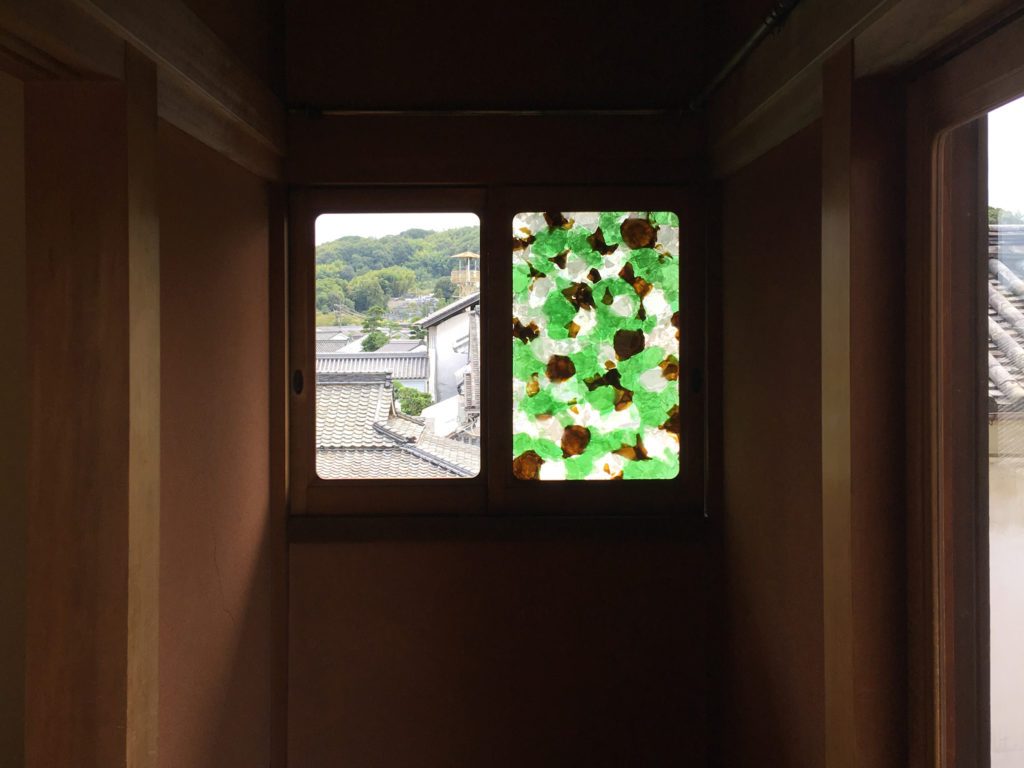

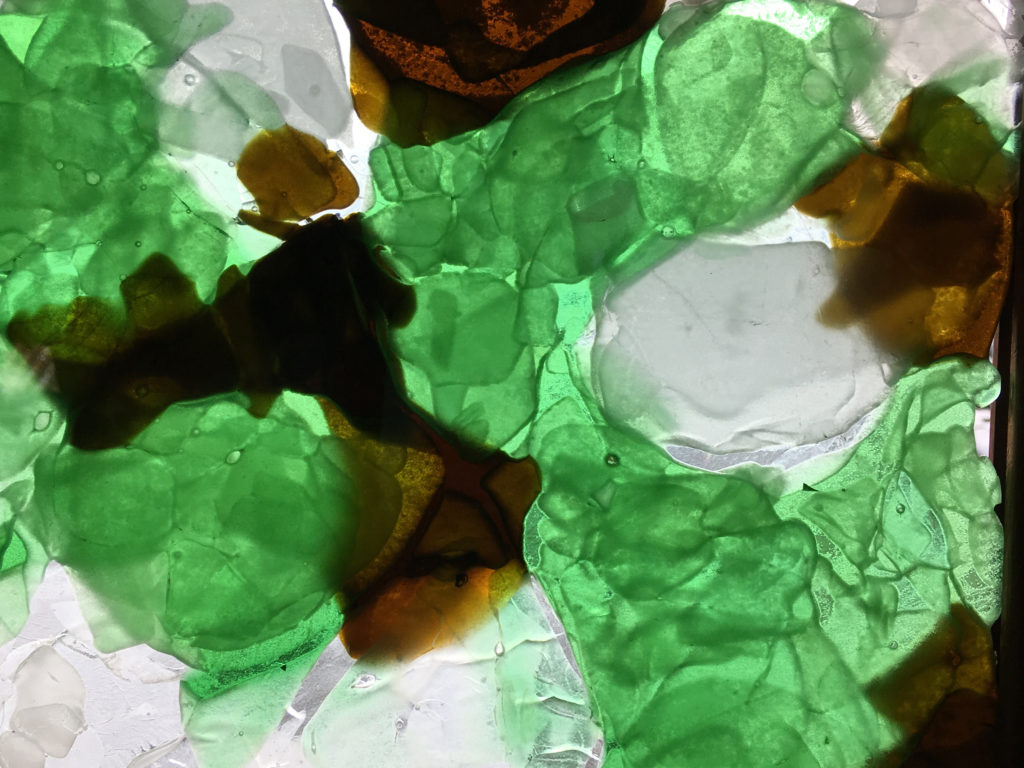
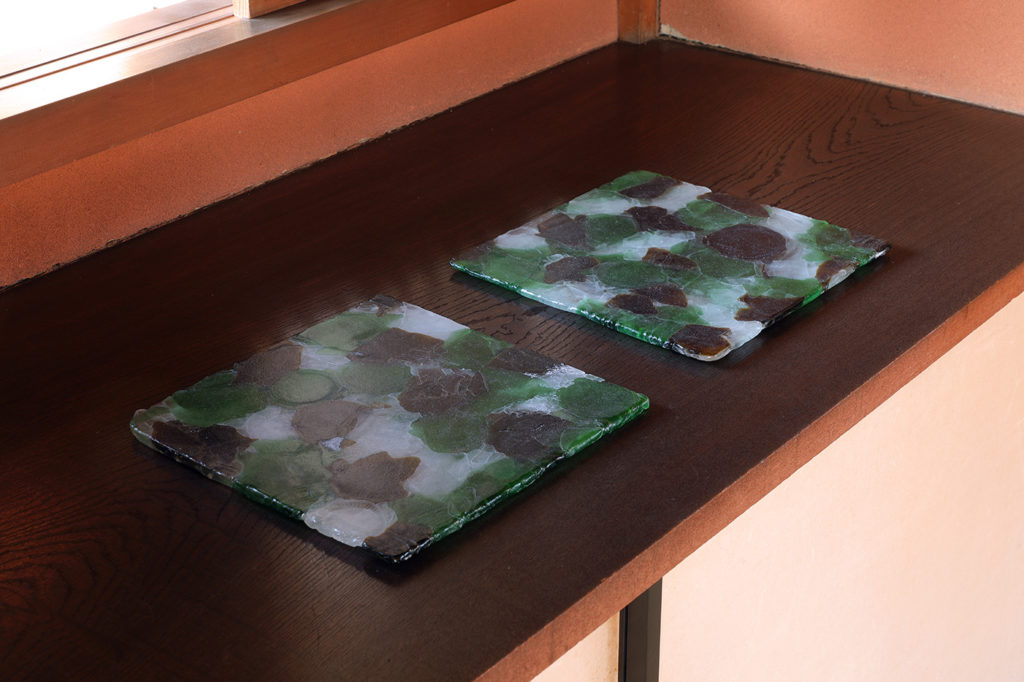
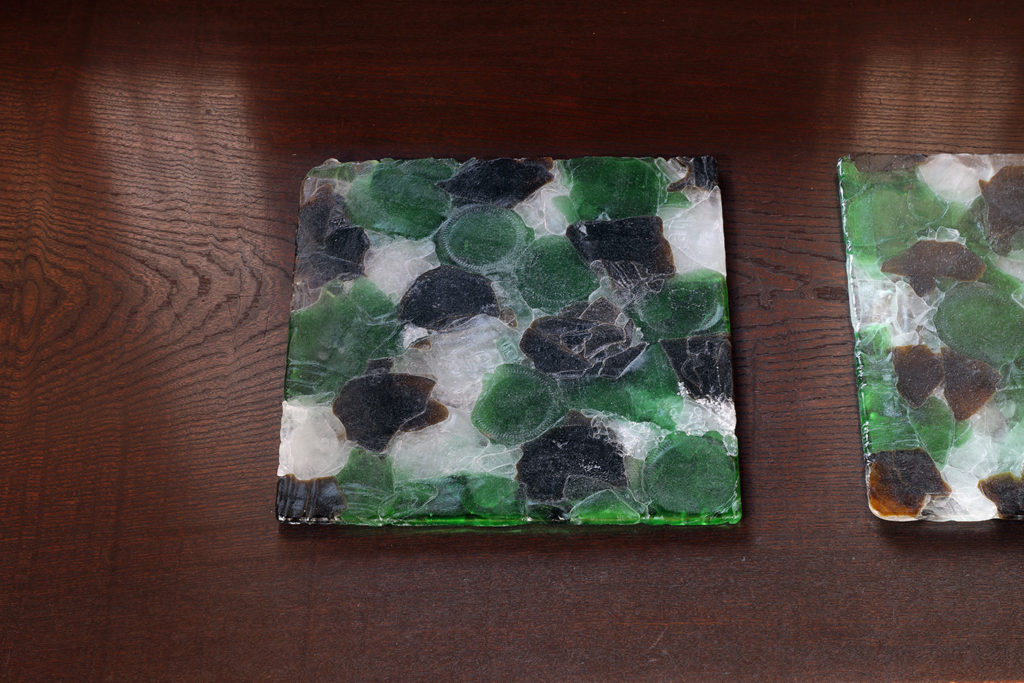
::::::::::::::::::::::::::::::::::
Exhibition
[漂泊之碑/Floating Monuments]
有隣荘/大原美術館
Yurinsou, Ohara museum of art
2019
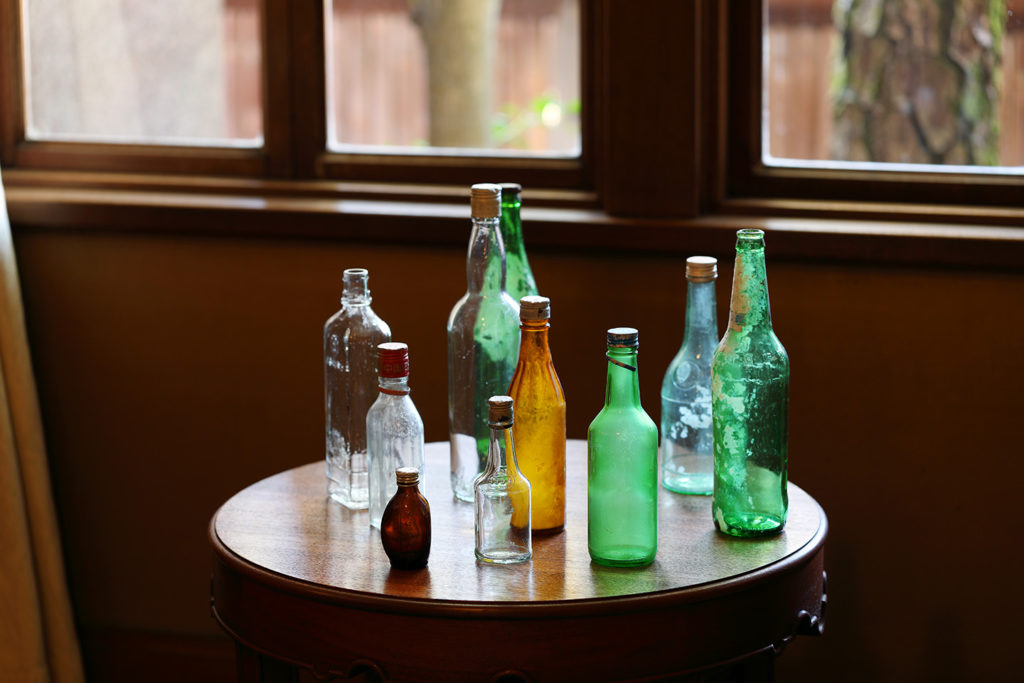
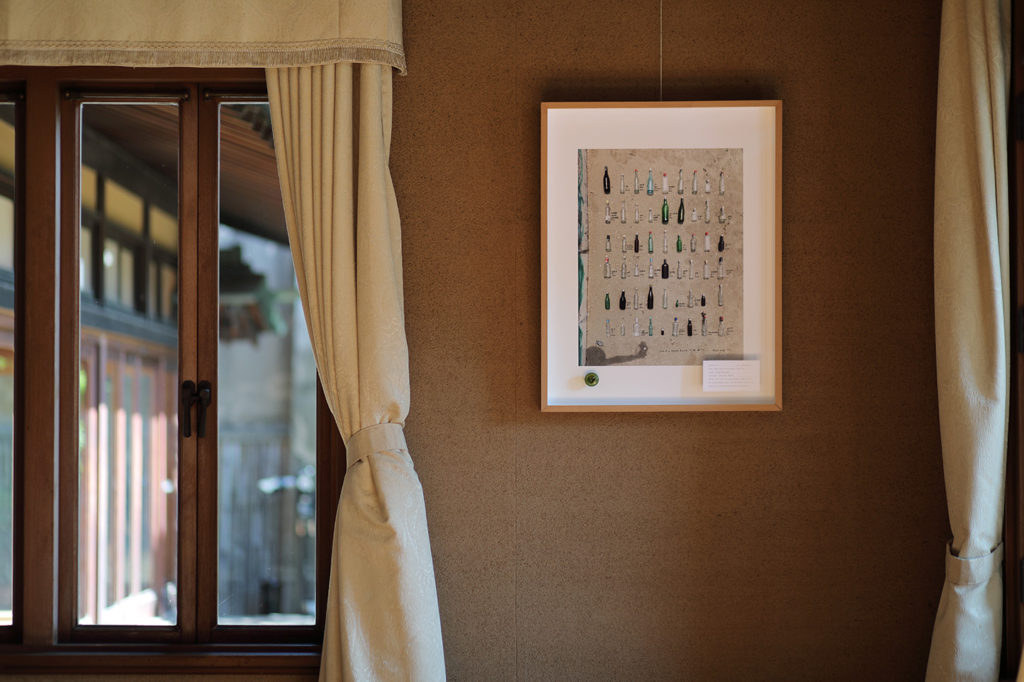
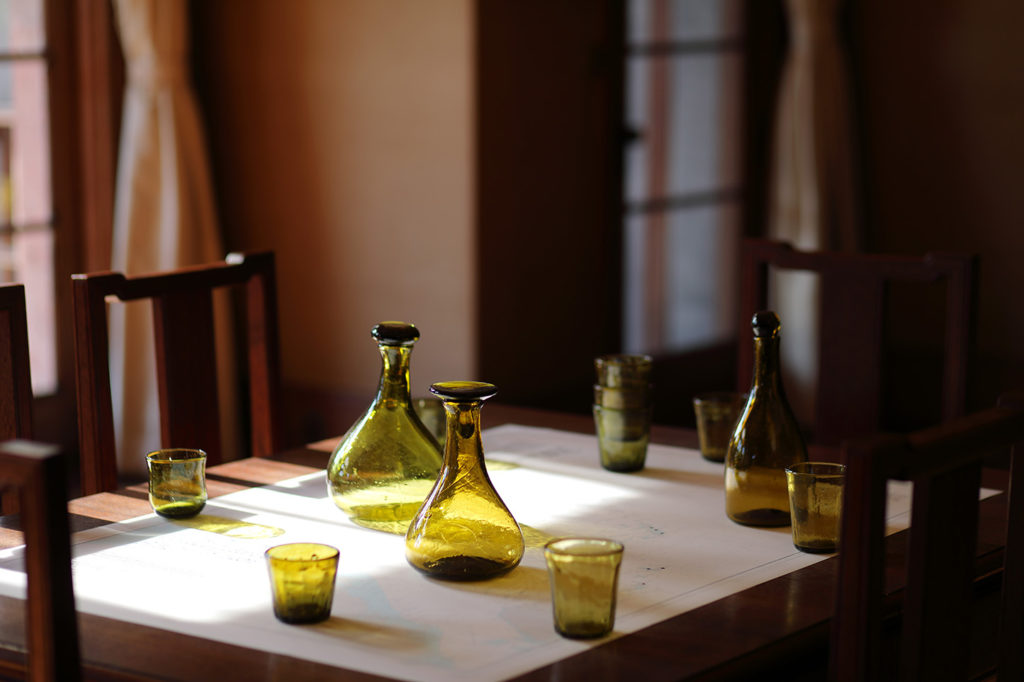
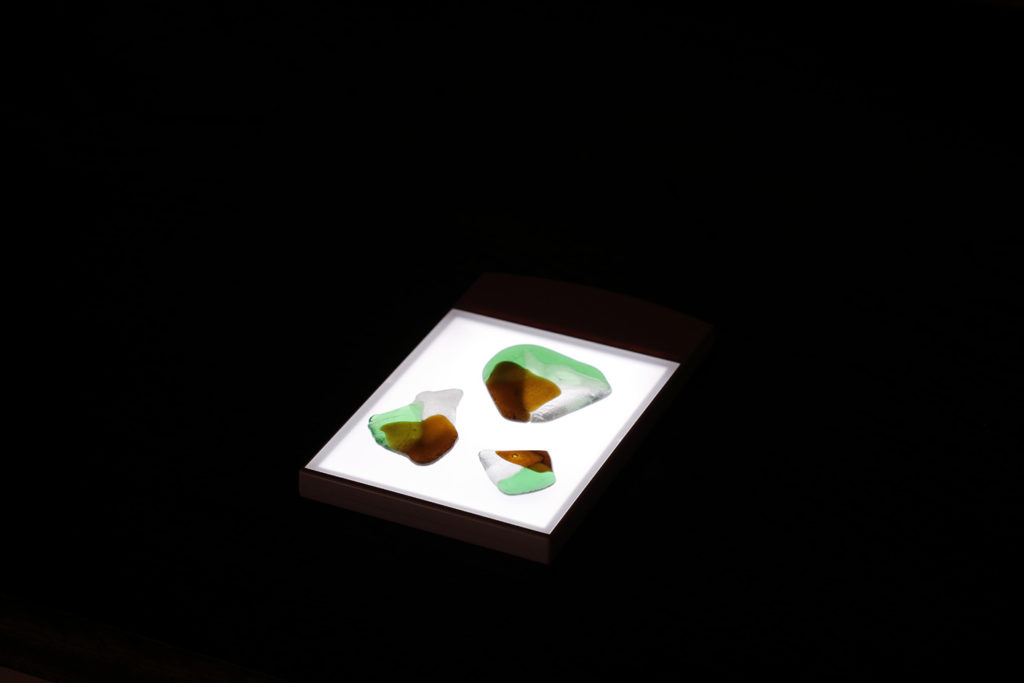
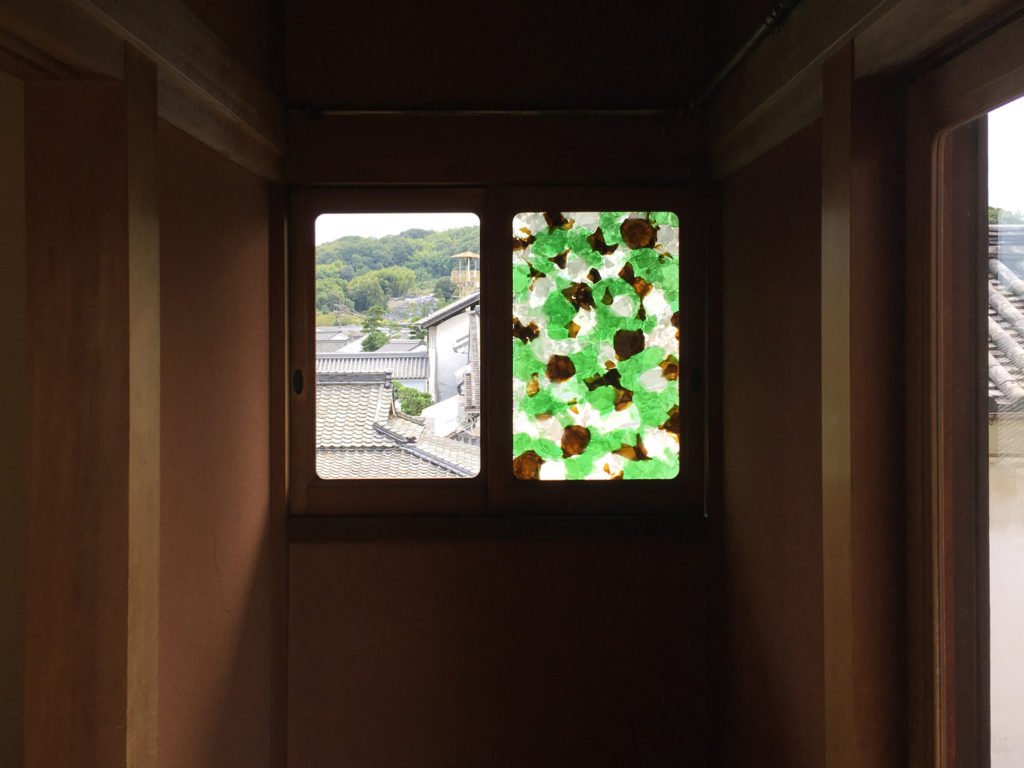
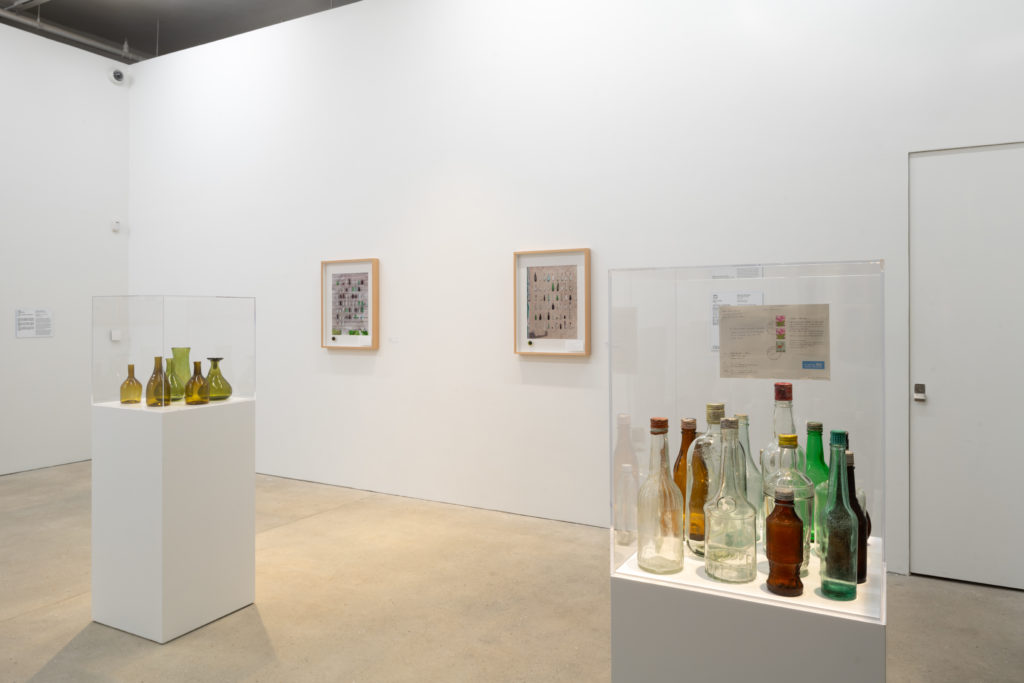
[Tokyo Contemporary Art Award 2019-2021 Exhibition]
東京都現代美術館、東京
Museum of Contemporary Art Tokyo, Tokyo, Japan
2021
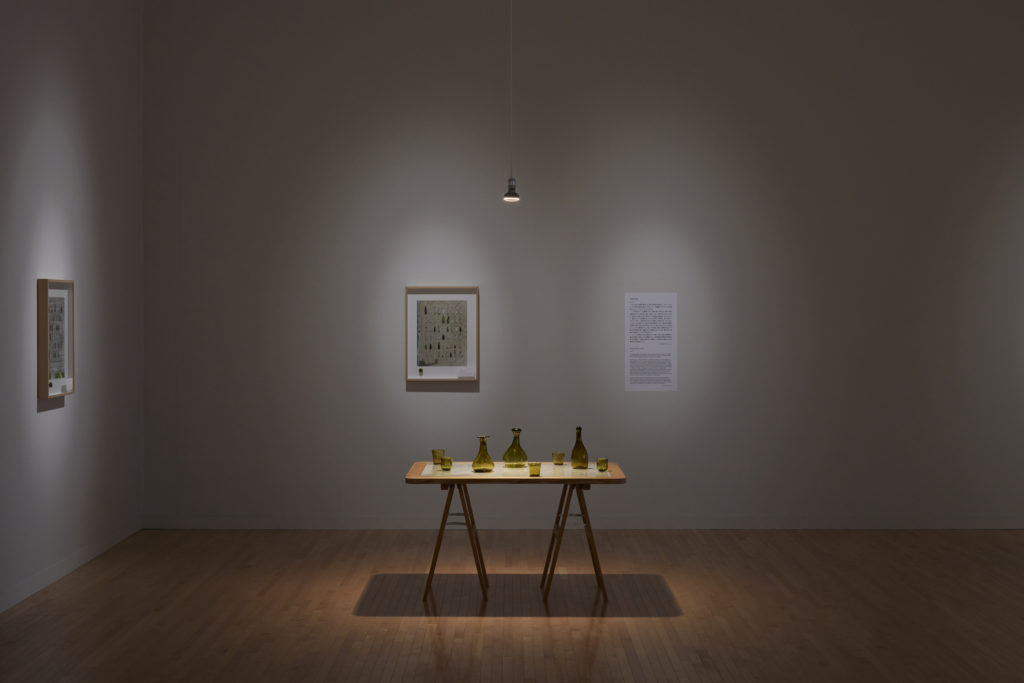
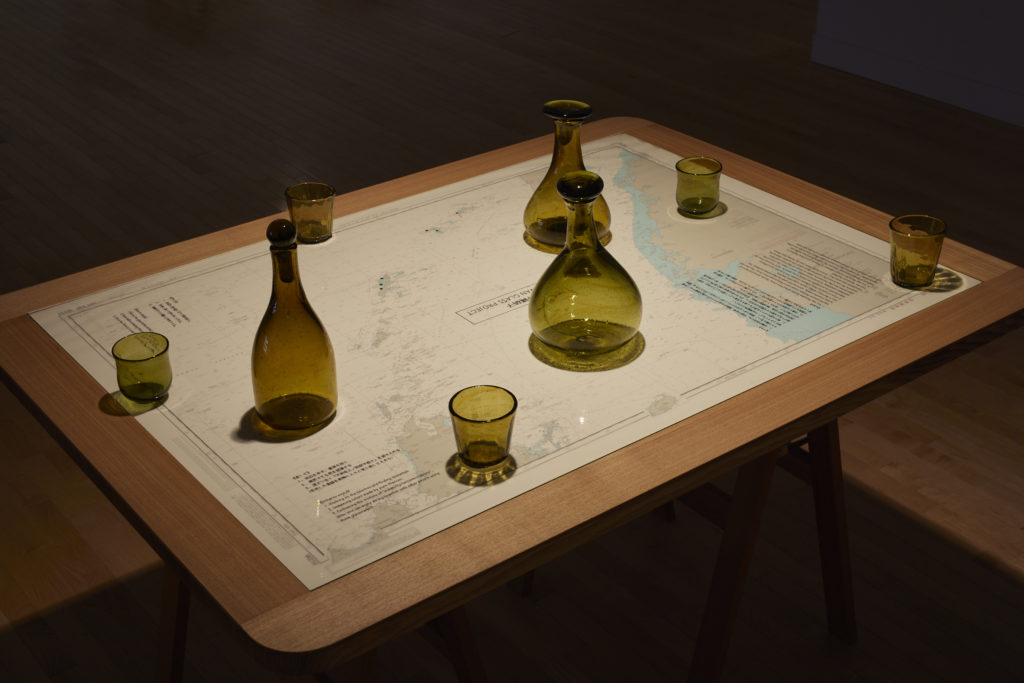

::::::::::::::::::::::::::::::::::
Imformation
作品タイトル:漂泊之碑
制作年:2014-
素材:ミクストメディアサイズ:可変
展示出品歴:
2023 「漂泊之碑」Alison Bradley Projects, ニューヨーク、アメリカ
2022 「船はあの丘に登った」オーフス現代美術館、オーフス、デンマーク
2021 「Tokyo Contemporary Art Award 2019-2021 受賞記念展」東京都現代美術館、東京
2019 個展「漂泊之碑」有隣荘/大原美術館、岡山
2019 「Ultimate Deal」文化備蓄基地、T4、ソウル、韓国
2018 個展「漂泊之碑」miyagiya ON THE CORNER、沖縄 2018 「Our Everyday―Our Borders」大館當代美術館、香港、中国
2016 個展「下道基行展 風景に耳を澄ますこと」黒部市美術館、富山
2014 個展「漂泊之碑」沖縄コンテンポラリーアートセンター、沖縄
Title: Floating Monuments
Year: 2014 –
Medium: Mixed media Dimensions: Variable
Exhibitions:
2023 “Floating Monuments” Alison Bradley Projects, New York, USA
2022 “A Ship Went Up That Hill” Kunsthal Aarhus, Aarhus, Denmark
2021 “Tokyo Contemporary Art Award 2019 – 2021 Exhibition,” Museum of Contemporary Art Tokyo, Tokyo
2019 Solo Exhibition “Floating Monuments,” Yurinso, Ohara Museum of Art, Okayama
2019 “Ultimate Deal” Oil Tank Culture Park, T4, Seoul, South Korea
2018 Solo Exhibition “Floating Monuments,” miyagiya ON THE CORNER, Okinawa
2018 “Our Everyday — Our Borders,” Tai Kwun, Hong Kong, China
2016 Solo Exhibition “Shitamichi Motoyuki – Open yourself to the landscape,” Kurobe City Art Museum,Toyama
2014 Solo Exhibition “Floating Monuments,” Okinawa Contemporary Art Center, Okinawa
